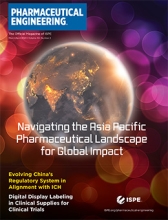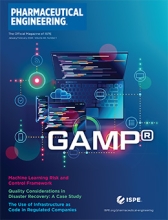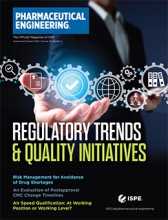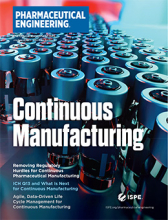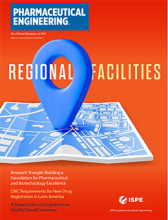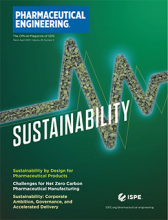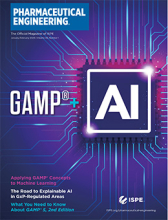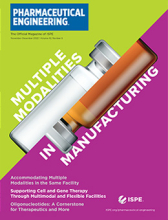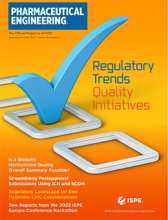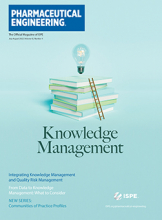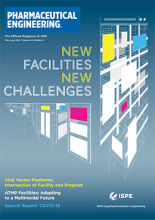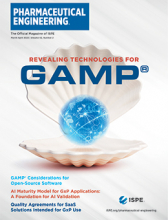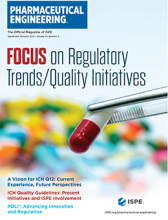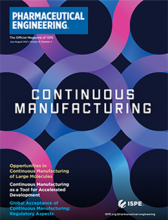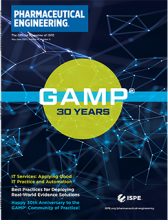Navigating the Asia Pacific Pharmaceutical Landscape for Global Impact Cover: The Asia Pacific region (APAC), like any large territory, encompasses a blend of well established and early-stage economies, diverse...
Stakeholders across industries are becoming accustomed to using information technology (IT) systems, applications, and business solutions that feature artificial intelligence (AI) and machine learning (ML). Even though...
There is much that large-scale commercial stem cell therapy processes can adopt from the existing bioprocessing industry. This article addresses some of the unique challenges posed by large-scale stem cell and stem cell...
Regulatory Trends & Quality Initiatives - Shortages of essential medicines around the world have been an ongoing concern for patients, caregivers, and regulators and have been exacerbated by the COVID-19 pandemic. Many...
Continuous manufacturing (CM) challenged regulators’ expectations and regulatory frameworks. This article discusses how US regulators addressed the regulatory hurdles related to CM to broaden its adoption through...
North Carolina’s Research Triangle is the largest of its kind in the US. Thanks to years of effort from industry, pharmaceutical professionals, and education institutions, it is synonymous with pharmaceutical and...
As the pharmaceutical industry faces ever-changing global challenges and market forces, it must review and revise product design to ensure that quality products remain available in the marketplace while moving toward...
This article explores life-cycle activities for machine learning (ML) within regulated life sciences. It positions and contextualizes the life cycle and management of the machine learning subsystem or components within a...
Many organizations are evaluating how advanced therapy medicinal products (ATMPs) and other traditional modalities may be combined within the same facility or within a newly constructed agnostic building. This article...
The International Council for Harmonisation of Technical Requirements for Pharmaceuticals for Human Use (ICH) guideline on Registration of Pharmaceuticals for Human Use (M4) offers advantages in the consistent format of...
ISPE held an Expert Xchange on 18 January 2022 that included presentations and interactive exercises that generated new and useful insights into the current effectiveness of the knowledge that flows into QRM and how a...
Realizing the promise of any novel viral vector therapeutic depends on the innovator’s ability to constantly meet evolving program requirements set in the product’s preclinical; clinical; chemistry, manufacturing, and...
This article aims to refresh information on open-source software (OSS) within regulated computerized systems that was first discussed in an article in May-June 2010 Pharmaceutical Engineering®. The adoption of OSS...
Emerging Leaders has grown from an initiative for interactions among early-career professionals and entering ISPE into much more: a training ground, a networking organization, and a new foundation for the future of ISPE...
Industry 4.0 applications in biopharma involve the complete spectrum of data science throughout the entire product life cycle of many disparate entity types. Tools such as digitalization, modern data science, and the...
A Vision for ICH Q12: Current Experience, Future Perspectives Cover: Management of global postapproval chemistry, manufacturing, and controls changes is a growing challenge for industry with many issues. ICH Q12...
Opportunities in Continuous Manufacturing of Large Molecules Cover: Continuous manufacturing has attracted significant interest over the past decade for small molecules formulated as drug products. The case for adopting...
IT Services: Applying Good IT Practice and Automation Cover: This article focuses on pragmatic quality- and risk-based approaches to IT infrastructure. It covers recommendations made by a US FDA/industry team linked to...
